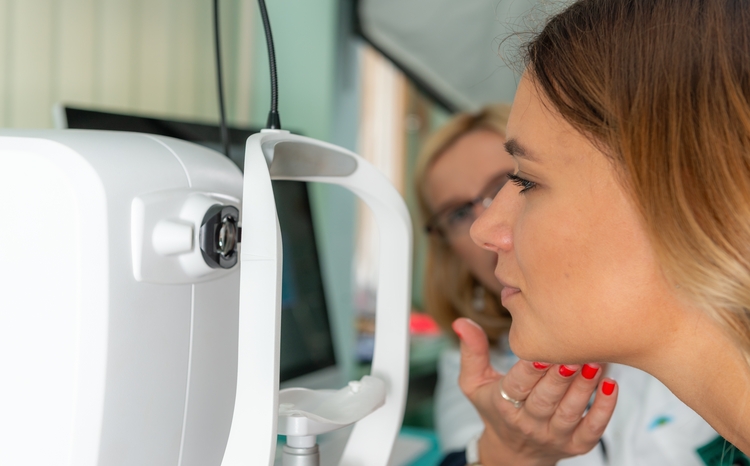Staffordshire PCTs hit retinopathy target
- 9 August 2007
 |
Three Staffordshire primary care trusts have managed to meet national targets and screen over 28,000 patients in a year for diabetic retinopathy, a complication of diabetes that can lead to blindness if left untreated.
The Staffordshire Diabetic Retinopathy Screening Service, run on behalf of South Staffordshire, North Staffordshire and Stoke on Trent PCTs, has set up community screening clinics which are held in 60 optometrist practices across the region.
Digital imaging specialist, Digital Healthcare, provided the service with its OptoMize iP software and electronic patient records system for use when screening away from a hospital ward.
OptoMize iP is bespoke software for diabetic retinopathy which manages the flow of patients and information through a clinical care pathway; it manages the clinical encounters with patients, ensuring that all the required procedures, observations and audit activities take place at the correct points along the pathway.
Malcolm Gray, an optometrist and clinical director of the screening service, told EHI Primary Care: “The digital screening process has been a huge success. In the first year of using the system we invited 80% of diabetic patients to come in to a clinic for a screening and 85% of those turned up for these all-important appointments. The rate continues to accelerate and I am confident we can meet the 100% government target by the end of the year.”
The service is responsible for the care of around 41,000 diabetes patients who are invited to attend a screening clinic at an optometrist practice near to their homes. Of these, around 36,000 choose to go to a clinic, rather than the hospital.
An optometrist takes a digital photograph of the back of their eyes and uses Digital Healthcare’s software to review the digital images to establish whether they are normal or whether the patient has diabetic retinopathy. Urgent cases are referred for hospital treatment while patients that require non-urgent follow-up are given a choice of attending an ophthalmology clinic in six hospitals.
The service now averages 4,000 patients a month spread over the 60 clinics and the PCTs are confident that all 36,000 patients will be seen by March 2008.
OptoMize iP has also been designed to comply with the National Programme for IT (NPfIT) standards for the secure electronic transmission of data – telemessaging. It has a robust call and recall system in place, so it can match up its own database with those used by GPs to keep track of which diabetic patients need their annual checkup.
Gray said: “Diabetes is the commonest cause of blindness in the working population and digital imaging is recognised as the most effective way to detect diabetic retinopathy early on when it can be treated.
“The ability to share information via telemedicine is a key benefit of this innovative software system. A number of our optometrists use a secure broadband connection to submit images for secondary review by optometrists that have received specialist clinical training. We hope to extend our broadband connection so that all of the optometrists involved in the screening service can submit images in this way.”
Digital Healthcare’s sales and marketing director, James Lythgow, told EHI Primary Care: “This shows how taking digital retinopathy screening programmes out to the community can help to increase the number of diabetics who come out and have these essential checks. The ability to get instant preliminary results, which are verified later, helps to make screenings quick and effective.
“This is especially appreciated by frail and elderly diabetics who do not want to travel all the way to their nearest hospital and so instead can go and see their local optometrist service at a clinic they know, with staff they trust.”
Links




